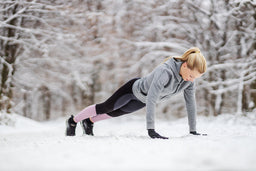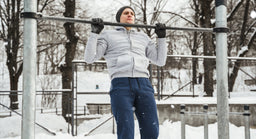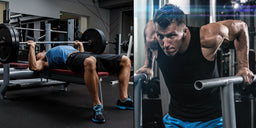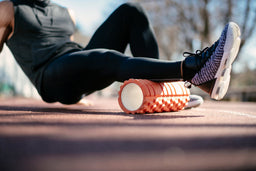
Which type of weighted vest is best?
Which type of weighted vest is best?
Weighted vests are an amazing way to add weight to your walks and workouts. Here’s how to choose between the two types of weighted vest.
What are the different types of weighted vests?
Did you know there are two popular styles of weighted vests? There are benefits to both types (in fact, we’d recommend you have one of each!)
Plate type weighted vests are longer on the body, with slimmer panels. The weight comes from thin pieces of weighted metal that slides inside the vest. You can adjust the weight by purchasing replacement plates.
Block type weighted vests get their weight from several small bricks that fit into pouches in the vest. These types of weighted vests are shorter and sit higher on the body. You can obviously adjust the weight of these vests by adding or removing the number of blocks.
5 reasons to use a weighted vest
1 A simple way to add load – wearing a weighted vest is a very easy and practical way to add load to your entire body in a way that works for training, walking, and running
2 Hands-free – pop on a weighted vest and you’ll have all the benefits of extra load, without needing to hold anything. So you can keep your hands free for whatever training you’re doing.
3 Versatility – weighted vests are an incredible tool for pretty much any workout from calisthenics to bodyweight, functional fitness to running.
4 Training variable – we all know that load is one of the key training variables you can play around with to keep making progress. Weighted vests make it easy to add load (especially if you’re losing body weight)
5 Long-lasting – a good weighted vest will withstand every workout and last a lifetime. They’re a really great investment for any active lifestyle.
How to choose a weighted vest
Whether you run, do calisthenics, or train in the gym, adding a weighted vest to your training stash is a no-brainer. But which type should you choose? Here are some things to consider:
- what kind of training are you likely to do?
- will you want to use it for lifestyle activity too?
- how quickly and easily will you need to adjust the weight?
Plate weighted vest vs block weighted vest
There are pros and cons to both type of weighted vest. The plate weighted type is slimmer and fits closer to the body, but the fact that the weight all comes from one plate means it won’t move with your body as much.
In contrast, a block type vest is bulkier and less streamlined, but tends to move with your body a bit better due to the weight coming from several blocks rather than one plate.
Best way to use a plate weighted vest
Plate weighted vests (also called tactical vests) are great for running, walking, and any upright exercise like air squats and lunges. They’re not so good for things like press ups, because the weight of the plate will pull the vest downwards. That said, most CrossFit athletes use this kind of vest.
Benefits: slim design, close to the body, can add more weight without bulk
Best for: running, long walks, bodyweight squats and lunges
Best way to train in a block weighted vest
Block weighted vests sit closer to the body (although the overall design of the vest is bulkier). This means it moves around less than a plate weighted vest. This style of weighted vest is best for movement-based workouts and calisthenics as it will sit tighter to the body (ad it’s easier to quickly remove or add smaller increments of weight). For example, our block weighted vests come in 20kg or 30kg versions but can be adjusted downwards by removing some blocks.
Benefits: less movement of the vest, can adjust weight in smaller increments
Best for: calisthenics, workouts with multiple movements
Ready to add a weighted vest to your training stash? Check out our block weighted vests in the Gravity store.

















